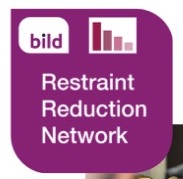We are delighted to say that Redstone PBS won an award recently at the Restraint Reduction Network Conference run by the British Institute for Learning Disability (BILD). We won the award in partnership with MacIntyre, a leading national charity which provides learning, support, education and care to over 1,500 children, young people and adults with learning disabilities many of whom are autistic. The award specifically recognised work we have been doing over the last 2 years for a young man living in his own home. When we first met C there were up to 100 episodes of physical aggression per day and he was self-injuring up to 200 times per day. In previous settings, a high level of restraint, medication and seclusion was used. Now however, physical aggression is rare, with zero incidents occurring over the last three months and while self-injurious behaviour is still displayed, it has reduced in frequency and intensity.
It was previously thought that C only had a very slim chance of being successfully supported to live in his local community. Many thought that this support service would fail within a very short space of time, it has not.
Sadly, we know this this situation is more common that any of us would like, so we thought it might be useful to explain, from our perspective, how it has been possible. Team working with MacIntyre, the person and their family has been key. It’s our view that none of us would have achieved what we have so far without this team-working. So, we want to outline what we think the different parts of the team have contributed and why this has, combined, made a crucial difference.
MacIntyre is committed to PBS and the ‘buy in’ and knowledge about PBS is across every level of the organisation. It’s not just been a bit of training for staff as an add on. Direct care staff and team leaders are provided with a number of training sessions which ensures that the values they use to guide their support approach are spot on, that they understand what PBS is and they know how important interaction with people is. Their approach comes from the position of being positive and person centred. Staff understand the importance of their ownbehaviour and their interactions with the person.
[spacer height=”15px”]
Redstone PBS
Redstone PBS brings a high level of expertise which takes years of training and supervision and is in line with the highest level of competence outlined in the PBS Academy competence framework (www.pbsacademy.org.uk). This means that we have the competence to put into place more complex behavioural interventions that require staff to respond in very specific ways and record detailed information. Because of the PBS focus of MacIntyre these interventions have been valued, understood and supported.
We often hear people say, ‘we’ve tried everything’. Remember there is a big qualifier to this – what they really mean is ‘we’ve tried everything we know’. Be open to the fact that there are other ways that you don’t know and if those in your service have done a short course in PBS there will be many things they still don’t know. We are aware of this within Redstone PBS, we also don’t know everything; that’s why we continue to invest in supervision and support from people with a high level of experience and qualifications.
[spacer height=”15px”]
The Family
C’s family pushed for removal of psychoactive medications, which we and MacIntyre supported; the total removal of this has had zero effect on increasing behaviours that challenge. In fact, C is now much more communicative with everyone. Family have also come up with creative ideas for activities and have worked hard to arrange things and make them happen. When it’s not been possible for the person to go to an activity, the activity has come to him! The family have ensured that his medical needs are met and thankfully we are starting to resolve some of these, with a further positive impact on reducing behaviours that challenge.
[spacer height=”15px”]
Quote from Family
“With the guidance and support of a robust PBS plan developed by Kate Strutt and Emma Brindley (Redstone PBS) we have seen C gain trust and are now witnessing C reach out for hugs from those around him. Trust has been built over these past 2 years, there have inevitably been some staff changes but the key in continuing to make it work for C is the use of ‘person centred approaches’ basically that means ‘what makes sense to C’, his needs and his likes etc…we reiterate this has been a slow process and it needed to be for it to be beneficial.”
[spacer height=”15px”]
The Person
C himself has communicated very clearly both in his behaviour and what he has said. During the initial stages of the interventions he would say ‘go away’ a lot. We made sure that staff listened to that and acted on it. There can often be a tendency for professionals and teams to think that if you follow what the person asks all the time this will not be in their best interests and you have to ‘push through’. This is not an approach we subscribe to. Happily, C is now saying ‘my mate’ to some staff members and being very gentle in his interactions with staff he perceives as more vulnerable in some way. C is also clearly communicating that he is in pain at times. Eventually, he was given a diagnosis of IBS and we are currently in the process of resolving this with medical support and diet changes.
[spacer height=”15px”]
PBS (the full version, not PBS lite!)
Since C moved out of the assessment and treatment unit into his new home, the biggest focus of our intervention has been building trust with him. That may not sound very behavioural – but it is when you look at the methods of how we achieve this. As part of the functional behaviour assessment it was clear that C had experienced a high degree of restraints and seclusions over many years, in many different services and school settings. It was also clear that the function of the physically aggressive behaviour was escape from people, often by them removing themselves from close contact with him.
We all avoid danger. When a person is behaving in a way that is physically aggressive it is a threat to us and we are designed as human beings to avoid that threat. This is natural. When a person has experienced those supporting them behaving in a way that is physically threatening to them (as a way of ‘managing’ or responding to behaviours that challenge) they are going to behave in a way that is protective to them and often the most effective way is to be physically aggressive to others. When that person is someone who needs our practical support for daily living and for social interaction we need to find a way to do this without anyone getting hurt or traumatised. Essentially, as PBS professionals we need to meet the needs of the person to feel safe so that they don’t need to behave in a way that makes people back off and we need to make sure those supporting the person also feel safe. Unfortunately, one way of achieving this is by minimising any contact at all, which is often how this scenario works out, with intermittent pushes for interaction resulting in risk or actual harm to one or another of the parties.
The behavioural science element of PBS helps us to understand that in these situations we can’t go from no contact to lots of contact, even in short bursts, without triggering anxiety in both the person and the staff. This change has to be incremental. We started with staff gradually increasing the time in proximity to C, not placing demands or socially engaging but just being nearby, in addition to support around meals, TV, clothing, etc. At first this was only 30 seconds in every half hour. This time was gradually and systematically increased until we began to see C, not only safely tolerate staff presence, but begin to initiate interaction on his own terms. This was a wonderful sign of progress and so we then shifted from being physically present to modelling activities. Over time this has built up to longer periods with increased social interactions initiated by both staff and C.
During the initial stages the staff team needed lots of coaching, modelling, prompting and supportive feedback from us. These are all essential teaching tools based on behavioural science and this is how PBS should be implemented. Handing over a PBS plan and expecting staff to follow it does not often work, particularly in more complex situation; and can often lead to mutual blaming of staff and professionals. Staff need to understand the rationale for the intervention, the importance of implementing it consistently and the need for ongoing data collection. Although the staff team had an understanding of PBS, each situation, intervention and person is different so support to implement a specific strategy is needed in all provider services.
[spacer height=”15px”]
Quote from staff
“We are now able to get closer to C and he allows us to swim with him and eat meals together, which we didn’t think would be possible when we first started to support him. He has also started to communicate with us by using his voice; whereas before C would demonstrate that he was unhappy with physical behaviour, he now raises his voices or changes the pitch to let us know that a situation needs to change.”
[spacer height=”15px”]
Achieving team working isn’t easy, sometimes there are communication breakdowns, misunderstandings and differences in opinion. This is to be expected. Remembering why you are all there is important. It’s for the person.
What we have achieved as a team over the last two years is a significant reduction in behaviours that challenge, a massive increase in safe contact and interaction between the person and his staff team and family, security of C living in his own home, increased activities, removal of all psychoactive meds, the start of effective treatment for IBS and a much happier person and family. It hasn’t been easy or straightforward, but with patience, persistence, teamwork and skill we made it happen. We are only at the start of improving things, there are more elements of the original plan that we have yet to put into place but if we keep pulling together we can achieve more than many people imagined.
[spacer height=”20px”]
If you’re interested in receiving further blogs or information about PBS, training and offers to your inbox click here
© Redstone PBS 2018
Authors
 Emma Brindley – Senior Behaviour Analyst (BCBA) Emma has worked in the field of applied behaviour analysis with people with intellectual disability and/or autism for over 17 years. Emma has worked with both children and adults in a variety of settings which include family homes, schools, community teams and residential services. Bsc Psychology, Msc Applied Behaviour Analysis
Emma Brindley – Senior Behaviour Analyst (BCBA) Emma has worked in the field of applied behaviour analysis with people with intellectual disability and/or autism for over 17 years. Emma has worked with both children and adults in a variety of settings which include family homes, schools, community teams and residential services. Bsc Psychology, Msc Applied Behaviour Analysis
[spacer height=”20px”]
Kate Strutt – Director of Redstone PBS and Clinical Psychologist. Kate has over 19 years’ experience of working in intellectual disability and autism services, both within statutory services and the independent sector. Kate is registered with the Health and Care Professions Council. Bsc Psychology, D.Clin Psyc, PG Certificate Applied Behaviour Analysis.










